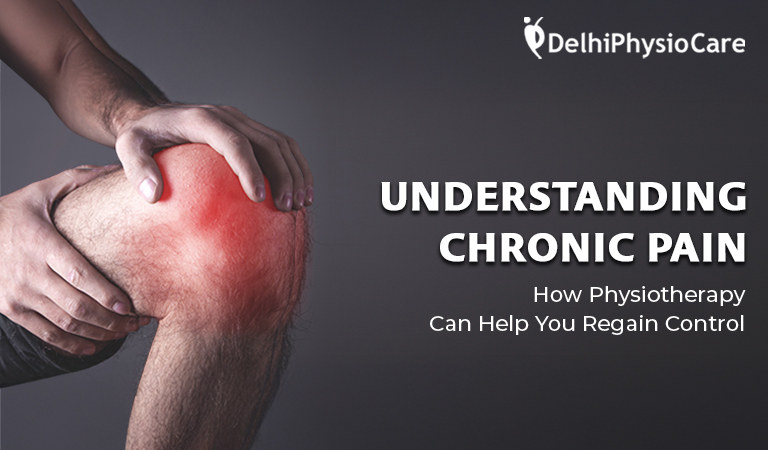
I. Introduction
Knee pain can be a real game-changer. Whether it’s that nagging ache after a long walk or a sharp twinge when climbing stairs, knee discomfort affects many aspects of daily life.
Physiotherapy offers a range of techniques that help manage knee pain without resorting to invasive procedures.
Let’s explore how these methods can restore your mobility and improve your quality of life, all while keeping you active and engaged in the activities you love most.
II. Understanding Knee Pain
Knee pain is a common issue that affects people of all ages. It can stem from various causes, including injury, overuse, or underlying medical conditions. Understanding the specific type of knee pain you’re experiencing is crucial for effective management.
Acute knee pain often arises suddenly due to trauma, such as sports injuries or falls. On the other hand, chronic knee pain develops gradually and may be linked to wear and tear over time.
Conditions like arthritis are significant contributors to persistent discomfort in this joint. They can lead to inflammation and limit mobility. Additionally, issues with ligaments or cartilage may also play a role in your symptoms.
Recognizing these factors helps tailor treatment approaches effectively. The right understanding sets the stage for targeted interventions that provide relief from knee-related challenges.
III. Physiotherapy Assessment for Knee Pain
A thorough physiotherapy assessment is crucial for understanding knee pain. It starts with a detailed patient history. This includes the nature of the pain, its duration, and any previous injuries.
A thorough assessment by a qualified physiotherapist is the first step towards effective management. This assessment typically involves:
- Patient History: Gathering information about the onset of pain, symptoms, mechanism of injury (if any), and any previous treatments.
- Physical Examination: Assessing range of motion, muscle strength, joint stability, posture, and palpating the knee for tenderness. Special tests, like the McMurray’s test for meniscus tears or the Lachman test for ACL injuries, may be performed.
- Gait Analysis: Observing the patient’s walking pattern to identify any abnormalities that may contribute to knee pain.
IV. Physiotherapy Techniques for Knee Pain Management
Physiotherapy utilizes a range of techniques tailored to the individual’s specific condition:
- Therapeutic Exercises: These form the cornerstone of physiotherapy for knee pain.
- Strengthening Exercises: Focus on strengthening the muscles surrounding the knee, including the quadriceps, hamstrings, glutes, and calf muscles. Examples include straight leg raises, modified squats, hamstring curls, and calf raises. Strong muscles provide support and stability to the knee joint.
- Range of Motion and Flexibility Exercises: These exercises aim to restore and maintain normal joint movement. Examples include heel slides, knee extensions, hamstring stretches, and quadriceps stretches.
- Proprioceptive Exercises: These exercises improve balance, coordination, and awareness of the knee’s position in space. Examples include single-leg stance and wobble board exercises.
- Manual Therapy: Hands-on techniques used by physiotherapists to:
- Joint Mobilization and Manipulation: Improve joint mechanics, reduce stiffness, and restore normal movement.
- Soft Tissue Mobilization: Address muscle tension, reduce pain, and improve tissue flexibility through massage and myofascial release.
- Electrotherapy:
- TENS (Transcutaneous Electrical Nerve Stimulation): Uses mild electrical currents to provide pain relief by stimulating nerves and blocking pain signals.
- Ultrasound Therapy: Uses sound waves to promote tissue healing and reduce pain and inflammation.
- Other Modalities:
- Heat and Cold Therapy: Ice is used to reduce inflammation in the acute phase, while heat can be used for muscle relaxation in chronic conditions.
- Taping: Kinesio taping or other taping techniques can provide support, stability, and pain relief.
- Bracing: Knee braces can provide additional support and stability, especially during activities.
- Gait Retraining: Addressing abnormal walking patterns to reduce stress on the knee joint.
- Patient Education: Providing advice on activity modification, pacing, ergonomics, and home exercise programs.
Each technique serves a specific purpose, helping individuals regain their quality of life without invasive surgery.
V. Benefits of Physiotherapy for Knee Pain
Physiotherapy offers numerous advantages for individuals dealing with knee pain:
- Significant pain reduction.
- Improved range of motion and flexibility.
- Increased muscle strength and stability around the knee.
- Enhanced functional ability and mobility, allowing individuals to return to daily activities and hobbies.
- Prevention of further injury by addressing underlying biomechanical issues.
- Delaying or avoiding the need for surgery in many cases.
Overall, engaging in physiotherapy not only addresses immediate concerns but also fosters overall well-being and functional independence.
VI. Conclusion
Physiotherapy offers a powerful and effective approach to managing knee pain without surgery.
Through a combination of therapeutic exercises, manual therapy, electrotherapy, and patient education, physiotherapists can help individuals reduce pain, improve function, and return to an active lifestyle.
Early intervention and a comprehensive approach are key to successful outcomes.
If you are experiencing knee pain, consulting with a qualified physiotherapist can provide a personalized treatment plan and guide you on your path to recovery.
